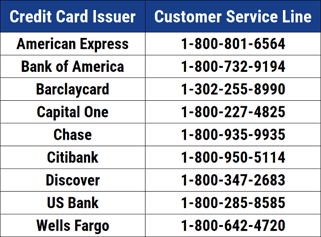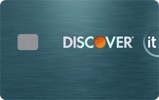Carrying over credit card obligations from one month to the next can be an expensive burden, especially as interest rates creep ever higher. The current average interest rates for all new card offers are between 21.10% and 27% and can go even higher for certain types of cards or if you’ve made late payments.
If you can’t pay off an expensive debt, the financing fees will add up quickly. For this reason, you may want to pursue refinancing. There are several ways to do it, but all can result in you paying less interest. That’s because you are pursuing new loan terms with a lower APR.
Card refinancing essentially takes your existing debt and transfers it to a new lender. But there are several types of loans that can serve this purpose. Here is what credit card refinancing is all about and how each option can work to your advantage.
1. Balance Transfer Credit Cards
Balance transfer credit cards can be one of the best ways to refinance your debt. It involves opening a new credit card that offers a lower interest rate that lasts a limited time. Most cards offer a 0% APR for between six and 21 months. Here are some of our favorites:
- 0% Intro APR for 21 months on balance transfers from date of first transfer and 0% Intro APR for 12 months on purchases from date of account opening. After that the variable APR will be 18.24% – 28.99%, based on your creditworthiness. Balance transfers must be completed within 4 months of account opening.
- There is a balance transfer fee of either $5 or 5% of the amount of each transfer, whichever is greater
- Get free access to your FICO® Score online.
- With Citi Entertainment®, get special access to purchase tickets to thousands of events, including concerts, sporting events, dining experiences and more.
- No Annual Fee – our low intro rates and all the benefits don’t come with a yearly charge.
|
Intro (Purchases)
|
Intro (Transfers)
|
Regular APR
|
Annual Fee
|
Credit Needed
|
|---|---|---|---|---|
0% 12 months on Purchases
|
0% 21 months on Balance Transfers
|
18.24% – 28.99% (Variable)
|
$0
|
Excellent, Good
|
Additional Disclosure: Citi is a CardRates advertiser.
- INTRO OFFER: Unlimited Cashback Match for all new cardmembers – only from Discover. Discover will automatically match all the cash back you’ve earned at the end of your first year! There’s no minimum spending or maximum rewards. You could turn $150 cash back into $300.
- Earn 5% cash back on everyday purchases at different places you shop each quarter like grocery stores, restaurants, gas stations, and more, up to the quarterly maximum when you activate. Plus, earn unlimited 1% cash back on all other purchases—automatically.
- Redeem your rewards for cash at any time.
- Your account may not always be eligible for balance transfers. Balance transfer eligibility is determined at Discover’s discretion.
- Discover could help you reduce exposure of your personal information online by helping you remove it from select people-search sites that could sell your data. It’s free, activate with the mobile app.
- No annual fee.
- Terms and conditions apply.
|
Intro (Purchases)
|
Intro (Transfers)
|
Regular APR
|
Annual Fee
|
Credit Needed
|
|---|---|---|---|---|
0% Intro APR for 6 months
|
0% Intro APR for 18 months
|
17.24% – 28.24% Variable APR
|
$0
|
Excellent/Good
|
- Earn $200 cash back after you spend $1,500 on purchases in the first 6 months of account opening. This bonus offer will be fulfilled as 20,000 ThankYou® Points, which can be redeemed for $200 cash back.
- Earn 2% on every purchase with unlimited 1% cash back when you buy, plus an additional 1% as you pay for those purchases. To earn cash back, pay at least the minimum due on time. Plus, for a limited time, earn 5% total cash back on hotel, car rentals and attractions booked on the Citi Travel℠ portal through 12/31/24.
- Balance Transfer Only Offer: 0% intro APR on Balance Transfers for 18 months. After that, the variable APR will be 19.24% – 29.24%, based on your creditworthiness.
- Balance Transfers do not earn cash back. Intro APR does not apply to purchases.
- If you transfer a balance, interest will be charged on your purchases unless you pay your entire balance (including balance transfers) by the due date each month.
- There is an intro balance transfer fee of 3% of each transfer (minimum $5) completed within the first 4 months of account opening. After that, your fee will be 5% of each transfer (minimum $5).
|
Intro (Purchases)
|
Intro (Transfers)
|
Regular APR
|
Annual Fee
|
Credit Needed
|
|---|---|---|---|---|
N/A
|
0% Intro APR Period 18 months on Balance Transfers
|
19.24% – 29.24% (Variable)
|
$0
|
Excellent, Good, Fair
|
Additional Disclosure: Citi is a CardRates advertiser.
As long as you repay the entire transferred debt by the promotional APR end date, all it will cost you is the balance transfer fee, which is typically between 2% and 4% of the amount transferred. If you can transfer your entire debt to the new card, your original account will now have a $0 balance.
You must follow some rules to make the most of this type of credit card refinancing. First, don’t apply unless you are sure you qualify. These accounts are typically available only to people with good to excellent credit scores, so build up your scores if they are too low right now.
You also should plan to repay the transferred debt before the regular rate goes into effect. And most importantly, only use the original card when you know you will pay the balance in full. If you don’t, you’ll now have two cards with outstanding balances, compounding your original problem.
2. Personal Loans
You can also repackage your credit card debt with a personal loan that has a lower interest rate than your credit card. You can use a personal loan to repay your credit card debt, so instead of having revolving credit card debt, you have an installment loan.
The benefit of this credit card refinancing method is that you will pay less over time because of the personal loan’s lower interest rate. Another advantage is that you would have a fixed amount of time, such as three to five years, to repay the debt. Here are some recommended debt consolidation lenders:
- Personal loans from $500 to $35,000
- All credit types are considered and welcome
- Simple, no credit impact form
- Helping consumers since 2001
- 4.7 out of 5 Trustpilot rating with 2,000+ reviews!
- Loans from $500 to $10,000
- All credit types accepted
- Receive a loan decision in minutes
- Get funds directly to your bank account
- Use the loan for any purpose
- Loan amounts range from $1,000 to $35,000
- All credit types welcome to apply
- Lending partners in all 50 states
- Loans can be used for any purpose
- Fast online approval
- Funding in as few as 24 hours
You don’t have the same option to pay small amounts as you do with your card’s minimum monthly payment, so you can be sure that you’ll be back in the black by a fixed date. Also, switching products this way can increase your credit scores because it lowers your credit utilization ratio once your card is paid off.
Of course, there are some downsides to consider. One is that the payments can be much higher, especially if the loan repayment term is short. The fixed repayment terms typically range from 12 to 60 months.
The minimum payment for a $5,000 credit card could be $150, while the same debt with a 24-month term and an 11% APR would have payments of $233. Make sure you can afford the loan payments without stress.
Also, the money will likely be deposited into your bank account, so you must use that money as you originally intended — to refinance your credit card debt — instead of something else that comes up.
Some personal loans have origination fees, too, which will be added to the debt. These can range from 1% to 8% of the amount borrowed, so look for the loan with the lowest rates and fees.
3. Consolidation Loans
A consolidation loan is similar to a personal loan, except you do not see the money at all. The lender sends it directly to the credit card company or companies. It can be a great way to streamline your financial obligations, especially if you have multiple cards that you have been trying to manage. They also have lower interest rates and will put you on a payment schedule so you can track your debt reduction progress.
As with personal loans, debt consolidation loans have fixed repayment terms, usually ranging from 12 to 60 months, and origination fees of 1% to 8%.
Because the money goes directly to your credit card issuers, you won’t have the same temptation to use the funds for something else. But you will have the same opportunity to use your cards again, so be careful.
4. Home Equity Loans
If you are a homeowner, you can pay off your high-interest credit card debt with a low-interest home equity loan. Also known as a second mortgage, you would use the money to repay your credit cards and have up to 30 years to repay the amount you borrowed. In general, you can borrow up to 80% of your home’s value.

Although this process sounds appealing, you are trading unsecured balances for debt that is secured by what is likely your most important asset — your home. If you can’t meet the payments, you could put yourself in jeopardy of foreclosure.
The new monthly payments can be affordable, but because the term is long, it can result in you paying more in interest. Some lenders charge closing costs, too.
5. Retirement Loan
Have money tucked away for your retirement in a 401(k)? If so, you may be able to refinance your credit card debt with a loan against those funds. The money is yours, too, so you don’t have to have a certain credit score to qualify, though there are origination fees, which range from $50 to $100.
The interest rates tend to be very low, and you are really just paying that interest to yourself. The IRS sets the term limit at five years.
There are some serious drawbacks to 401(k) plan loans. In the event you leave your job or are fired, you have to repay the amount you owe within a short time frame. If you don’t, you will have to pay taxes and penalties on the loan.
During the time you are paying the loan, you may not be able to contribute to the plan. Your contributions lower your taxable income, so you forfeit that benefit. It also can detract from the amount you want to retire on as well as missing out on compounding returns that you get while your money is invested.
6. Negotiate With Your Current Card Issuer
Another option is to contact your credit card issuer and ask if they will reduce the interest rate. While this is not technically refinancing, you are changing the terms of the account.

Maybe the card you have has an APR of 28%, and you’re carrying a $10,000 balance. You’ve never missed a payment, but the added interest is making getting out of debt a huge struggle.
With an unwavering $400 payment, it would take you 38 months to pay off the balance and cost you $5,182.46 in interest.
But you can call the issuer and ask if they can help you pay the debt off by lowering the APR. If you were to negotiate an 11% APR, the debt repayment period declines to 29 months and the total interest paid is $1,409.79 — a huge savings.
Upside: There is no loan origination or transfer fee to pay. Downside: The issuer has to agree.
Which Credit Card Refinancing Option is Right For You?
Refinancing credit card debt can save you money and time while also alleviating pressure. Every option has positives and negatives, so review each carefully. The last thing you want to do is find a solution and then discover that it’s not what you wanted. But when you choose the right one, you can get out of debt safely and without the high financing fees that have been holding you back.
Advertiser Disclosure
CardRates.com is a free online resource that offers valuable content and comparison services to users. To keep this resource 100% free, we receive compensation for referrals for many of the offers listed on the site. Along with key review factors, this compensation may impact how and where products appear across CardRates.com (including, for example, the order in which they appear). CardRates.com does not include the entire universe of available offers. Editorial opinions expressed on the site are strictly our own and are not provided, endorsed, or approved by advertisers.






![3 Ways: Get a Lower Interest Rate on Credit Cards ([updated_month_year]) 3 Ways: Get a Lower Interest Rate on Credit Cards ([updated_month_year])](https://www.cardrates.com/images/uploads/2017/09/lowerinterest.png?width=158&height=120&fit=crop)
![11 Ways to Lower Your Monthly Bill Payments ([updated_month_year]) 11 Ways to Lower Your Monthly Bill Payments ([updated_month_year])](https://www.cardrates.com/images/uploads/2022/06/Ways-to-Lower-Your-Monthly-Bill-Payments.jpg?width=158&height=120&fit=crop)
![7 Ways to Manage Credit Card Debt When Rates Rise ([updated_month_year]) 7 Ways to Manage Credit Card Debt When Rates Rise ([updated_month_year])](https://www.cardrates.com/images/uploads/2023/01/Ways-to-Manage-Credit-Card-Debt-When-Interest-Rates-Rise.jpg?width=158&height=120&fit=crop)
![Can You Pay a Credit Card with a Credit Card? 3 Ways Explained ([updated_month_year]) Can You Pay a Credit Card with a Credit Card? 3 Ways Explained ([updated_month_year])](https://www.cardrates.com/images/uploads/2017/02/card-with-card-2.png?width=158&height=120&fit=crop)
![3 Credit Cards For Kids & Ways to Help Them Build Credit ([updated_month_year]) 3 Credit Cards For Kids & Ways to Help Them Build Credit ([updated_month_year])](https://www.cardrates.com/images/uploads/2022/03/Credit-Cards-For-Kids.jpg?width=158&height=120&fit=crop)
![5 Ways a Credit Card Can Rebuild Your Credit ([updated_month_year]) 5 Ways a Credit Card Can Rebuild Your Credit ([updated_month_year])](https://www.cardrates.com/images/uploads/2016/08/5-ways-last-try.jpg?width=158&height=120&fit=crop)
![3 Ways Closing a Credit Card Can Hurt Credit ([updated_month_year]) 3 Ways Closing a Credit Card Can Hurt Credit ([updated_month_year])](https://www.cardrates.com/images/uploads/2017/10/closecard.png?width=158&height=120&fit=crop)
![9 Best Deals on Credit Card Interest Rates ([updated_month_year]) 9 Best Deals on Credit Card Interest Rates ([updated_month_year])](https://www.cardrates.com/images/uploads/2017/08/INTEREST.jpg?width=158&height=120&fit=crop)